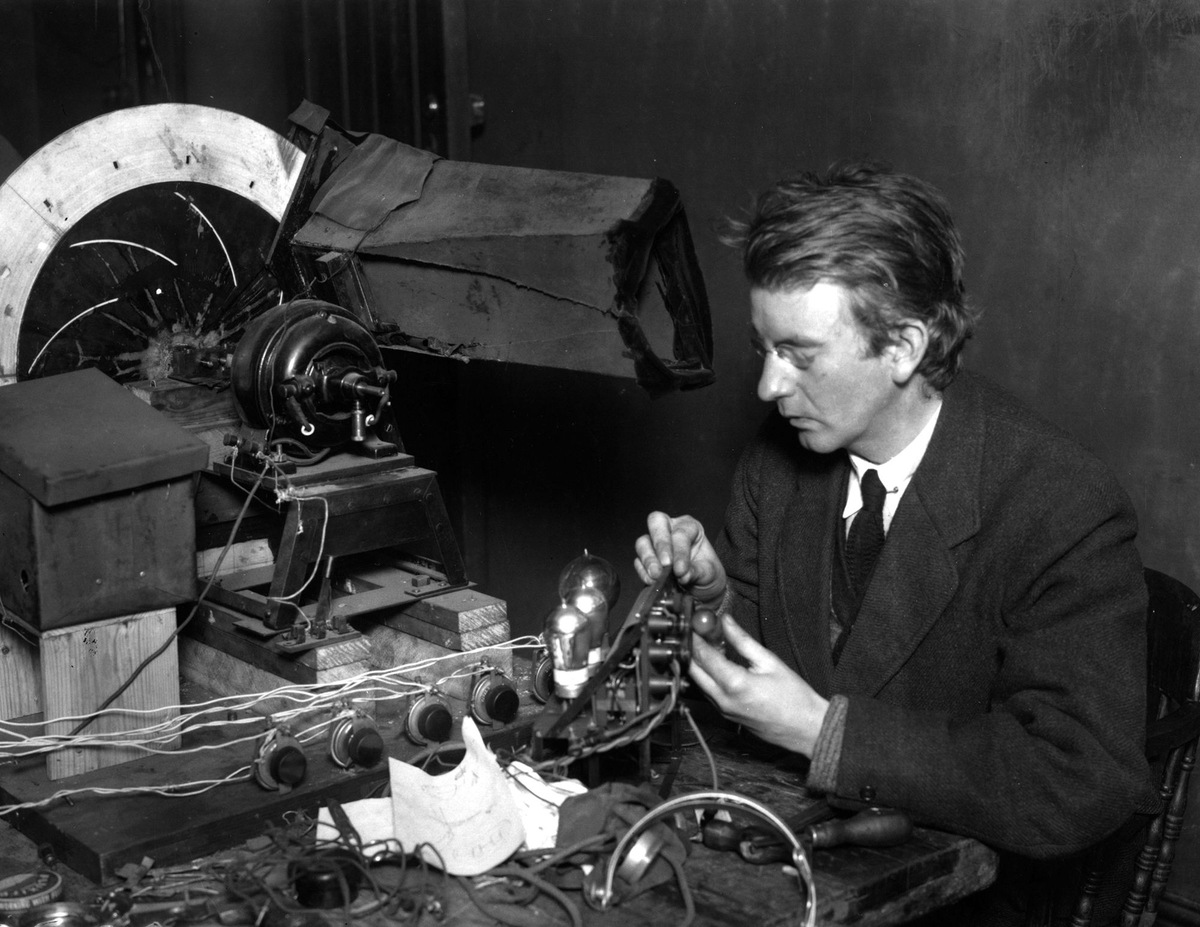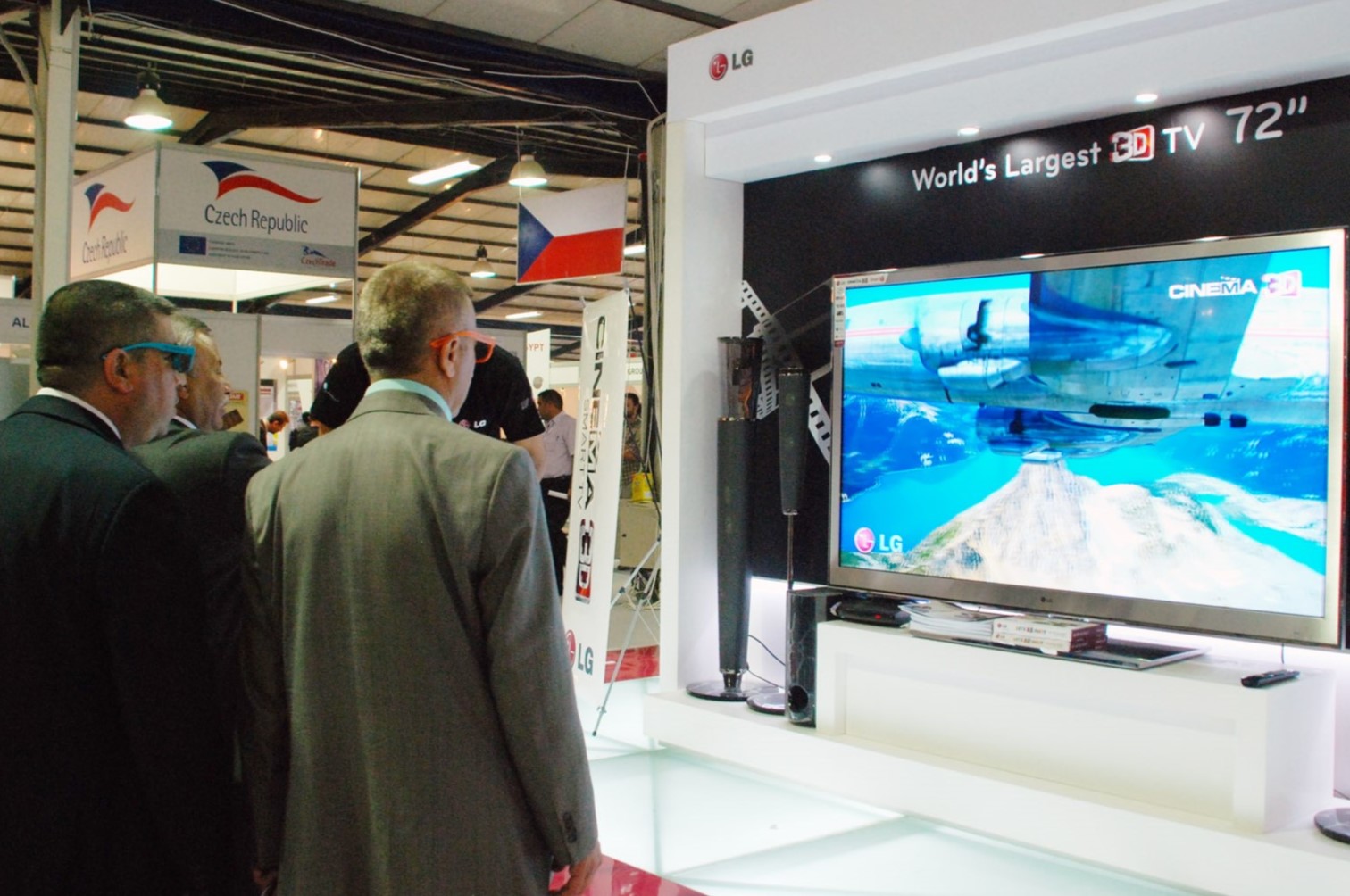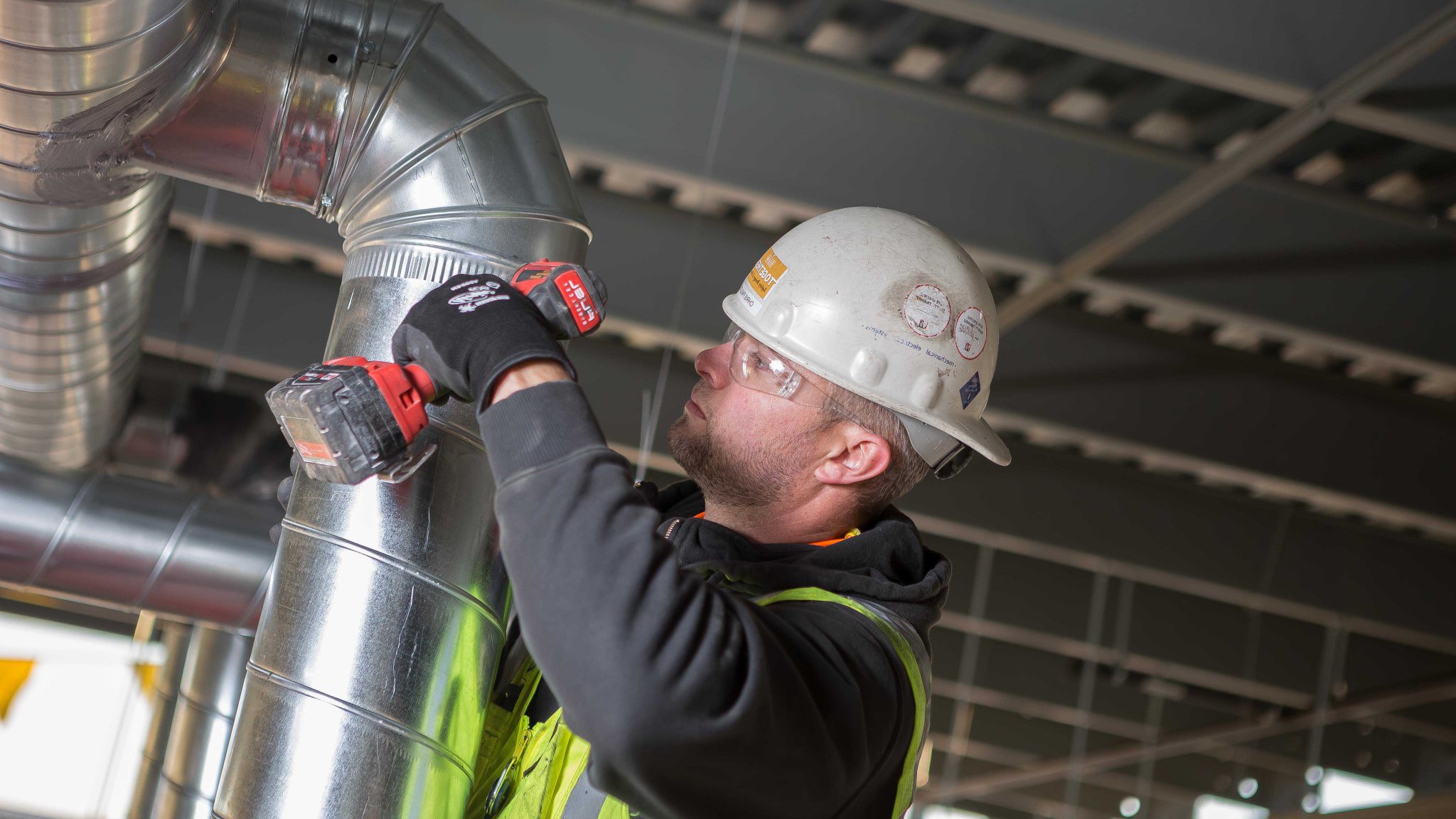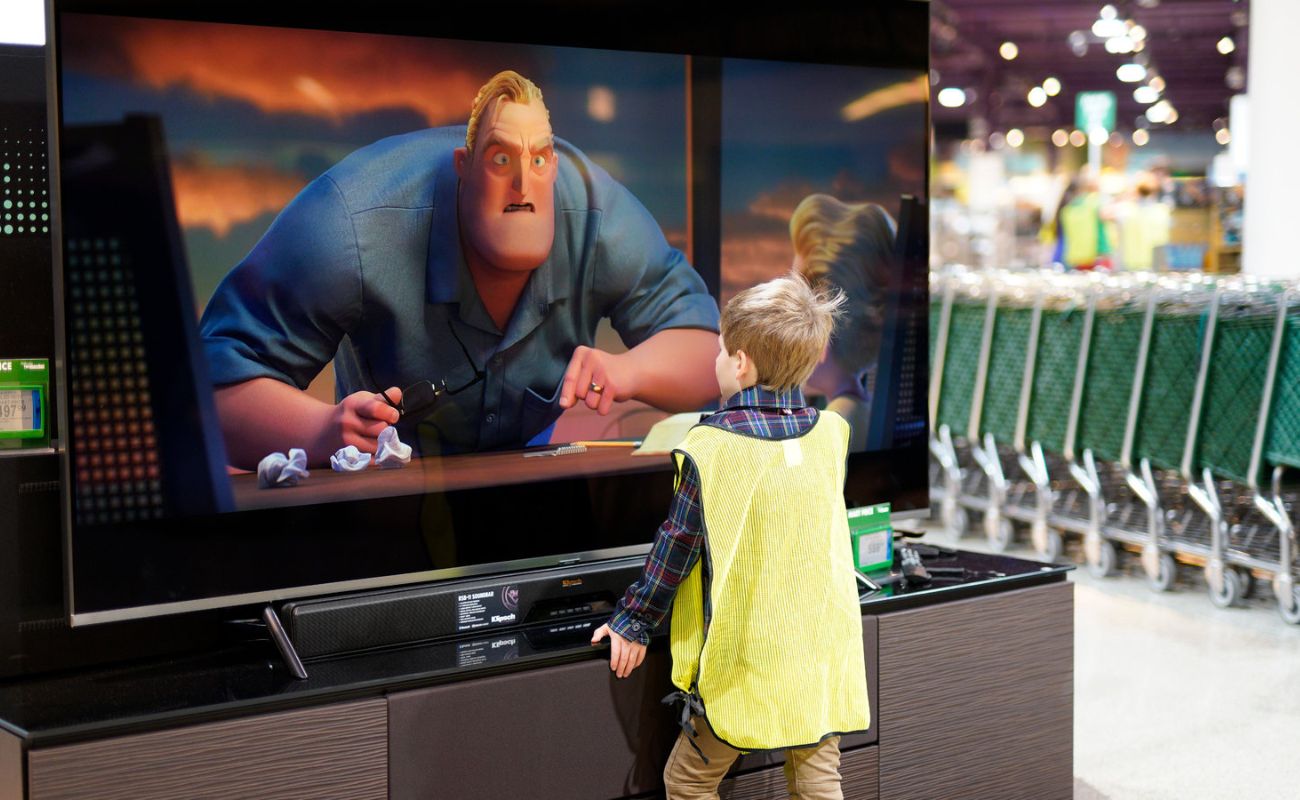Home>Technology>Home Entertainment Systems>How Does A Mechanical Television Work


Home Entertainment Systems
How Does A Mechanical Television Work
Published: December 21, 2023
Discover how a mechanical television works and brings the past to life. Explore the fascinating world of home entertainment systems and their evolution throughout history.
(Many of the links in this article redirect to a specific reviewed product. Your purchase of these products through affiliate links helps to generate commission for Storables.com, at no extra cost. Learn more)
Introduction
Welcome to the world of home entertainment systems, where the possibilities are endless and the immersive experience is guaranteed. From high-definition televisions to surround sound systems, homeowners have more options than ever before to create their own personal cinema-like experience right in the comfort of their own living room. In this article, we will delve into the captivating realm of home entertainment systems and explore the intricacies that make them so fascinating.
Over the years, technology has advanced in leaps and bounds, revolutionizing how we consume entertainment. Gone are the days of bulky cathode-ray tube televisions and scratchy mono speakers. Today, home entertainment systems offer stunning visuals, crystal-clear audio, and a plethora of features that cater to the diverse needs and preferences of users.
By combining cutting-edge technology and ergonomic design, home entertainment systems provide a seamless viewing and listening experience. Whether you’re an avid movie lover, a passionate gamer, or a music enthusiast, you can customize your home entertainment system to suit your specific needs and enjoy a truly immersive experience.
In this article, we will discuss the history of mechanical televisions, the components that make them work, the scanning process, signal transmission, image formation, and the advantages and disadvantages of mechanical televisions. So sit back, relax, and get ready to dive into the fascinating world of home entertainment systems.
Key Takeaways:
- The Evolution of Home Entertainment
From mechanical televisions to high-definition displays, the journey of home entertainment systems showcases the pioneering spirit of inventors and the remarkable advancements in technology. - Mechanical Television’s Legacy
While mechanical televisions had limitations, they laid the groundwork for modern television technology. Their historical significance and early innovations paved the way for the immersive home entertainment systems we enjoy today.
Read more: How Does A Television Work
History of Mechanical Televisions
The history of mechanical televisions can be traced back to the late 19th century when inventors began experimenting with ways to transmit and reproduce images. One of the pioneers in this field was Scottish inventor John Logie Baird, who is credited with the development of the first working mechanical television system.
In 1925, Baird demonstrated his mechanical television system, known as the “Televisor,” to the public. This groundbreaking technology used a rotating disk with perforations to capture and display images. The Televisor was limited to transmitting black and white images with low resolution, but it was a significant step forward in the evolution of television.
Another notable figure in the history of mechanical televisions is Philo Farnsworth, an American inventor who is often credited with inventing the first fully electronic television system. Unlike the mechanical televisions of Baird, Farnsworth’s system used electronic scanning to capture and reproduce images. His invention laid the foundation for the development of modern television technology.
Throughout the 1920s and 1930s, inventors and engineers continued to refine and improve mechanical television systems. These early televisions relied on the mechanical movement of various components, such as rotating disks or spinning mirrors, to capture and display images. However, these mechanical systems had several limitations, including low picture quality, flickering images, and the inability to transmit color.
The introduction of electronic television systems in the 1930s eventually led to the decline of mechanical television. The electronic systems offered better picture quality, higher resolution, and the ability to transmit color images. Despite this, the development of mechanical televisions played a crucial role in laying the groundwork for the modern television technology we have today.
Today, mechanical televisions are considered artifacts of a bygone era. However, they hold a special place in the history of television as the early pioneers who pushed the boundaries of technology and paved the way for the remarkable innovations we enjoy today. The evolution of television technology continues to this day, with advancements such as high-definition displays, 4K resolution, and smart features that enhance the home entertainment experience.
Components of a Mechanical Television
A mechanical television system consists of several key components that work together to capture, transmit, and display images. Understanding these components is essential to grasping the inner workings of a mechanical television. Let’s explore each of these components in more detail:
- Camera: The camera, also known as the “image dissector,” captures the image to be transmitted. In mechanical televisions, this camera typically used a rotating disk with photosensitive cells or a flying spot scanner that scanned the image line by line.
- Transmitter: The transmitter receives the electrical signals from the camera and converts them into a form that can be transmitted over the airwaves. In mechanical televisions, the transmitter was responsible for modulating the signals onto a carrier wave for transmission.
- Receiver: The receiver, also known as the “television set,” is the device that receives the transmitted signals and converts them back into a visible image. In mechanical televisions, the receiver had various components, including a rotating disk or mirror, to reconstruct the image.
- Scanning Disk: The scanning disk is a crucial component in mechanical televisions. It rotates at a high speed and contains small holes or slits that allow light to pass through. This disk is responsible for breaking down the image into a series of lines.
- Signal Amplifier: The signal amplifier is responsible for boosting the electrical signals received from the transmitter. This ensures that the signals are strong enough to reproduce a clear and visible image on the receiver’s display.
- Display: The display component of a mechanical television is typically a small, low-resolution screen that can reproduce the image line by line. The early mechanical televisions had small screens that could only display black and white images with limited detail.
- Power Supply: The power supply provides the necessary electrical power to all the components of the mechanical television system. It ensures that each component receives the correct voltage and current to function properly.
These are the main components that make up a mechanical television system. Each component plays a crucial role in capturing, transmitting, and displaying images. While mechanical televisions have been surpassed by newer technologies, understanding the components of these early television systems helps us appreciate the advancements that have been made in the field of home entertainment.
Scanning Process in Mechanical Televisions
The scanning process is a fundamental aspect of how mechanical televisions capture and reproduce images. It involves systematically breaking down an image into a series of lines and then reconstructing those lines to form a complete picture. Let’s explore the scanning process in mechanical televisions in more detail:
1. Image Capture: The scanning process begins with the image capture using a camera or image dissector. In mechanical televisions, this typically involved a rotating disk with small holes or slits. As the disk spins, these holes or slits pass in front of the camera, allowing light to pass through and capture the image.
2. Line-by-Line Scanning: Once the image is captured, the scanning process starts by breaking down the image into a series of lines. Each line in the image is sequentially scanned and transmitted. In mechanical televisions, this scanning is achieved through the rotation of the scanning disk, which has the holes or slits arranged in a spiral or circular pattern.
3. Horizontal and Vertical Scanning: Mechanical televisions utilize two types of scanning to reproduce the entire image. The first is the horizontal scanning, where the scanning disk rotates rapidly to scan each line of the image horizontally. Once all the lines in a single horizontal scan are completed, the scanning disk moves vertically to start the next line scan.
4. Interlaced Scanning: In some mechanical televisions, interlaced scanning is employed to improve the image quality. Interlaced scanning involves dividing the image into two fields – the even-numbered lines and the odd-numbered lines. The scanning disk first scans the even lines, followed by the odd lines. This technique reduces flickering and improves the perceived resolution of the image.
5. Signal Transmission: As each line of the image is scanned, the electrical signals generated by the camera are transmitted to the receiver. These signals carry the information necessary for reproducing the image.
6. Image Reconstruction: At the receiver end, the scanned lines are reconstructed to form a complete image. This is achieved by using a similar scanning mechanism that synchronizes with the scanning process at the transmitting end. The reconstructed lines are then displayed on the screen in a sequential manner, creating a coherent visual representation of the original image.
The scanning process in mechanical televisions is a complex and intricate operation that allows for the capture and reproduction of images. While mechanical televisions have been replaced by electronic systems, understanding the scanning process helps us appreciate the early technological advancements that laid the foundation for modern television technology.
Signal Transmission in Mechanical Televisions
Signal transmission is a crucial step in the functioning of mechanical television systems. It involves the conversion of electrical signals generated by the camera into a form that can be transmitted over the airwaves and received by the television set. Let’s explore the process of signal transmission in mechanical televisions:
1. Signal Amplification: Before the signals can be transmitted, they need to be amplified to ensure they are strong enough. The electrical signals generated by the camera are typically weak, so a signal amplifier is used to boost their strength. This ensures that the signals can be transmitted over long distances without losing clarity or quality.
2. Modulation: In mechanical televisions, the electrical signals are modulated onto a carrier wave for transmission. This involves combining the signals with a high-frequency carrier wave using a process called amplitude modulation (AM). The amplitude of the carrier wave is varied based on the strength of the electrical signal, thus encoding the image information into the carrier wave.
3. Antenna: Once the signals are modulated, they are fed into an antenna. The antenna is responsible for transmitting the modulated signals as electromagnetic waves into the surrounding space. These electromagnetic waves carry the encoded image information and travel through the air, propagating the signal over a distance.
4. Transmission Range: The transmission range of mechanical televisions is typically limited compared to modern electronic systems. The low power of the transmitters and the lower frequency of the carrier waves used in mechanical televisions result in a shorter transmission range. As a result, the television signals could only be received within a certain proximity of the transmitter.
5. Receiver Reception: The transmitted signals are received by the antenna of the television set. The antenna captures the electromagnetic waves and converts them back into electrical signals. These signals are then fed into the receiver section of the television set for further processing.
6. Demodulation: At the receiver end, the demodulation process takes place. This involves separating the modulated signals from the carrier wave and extracting the original electrical signals that were generated by the camera. The demodulated signals carry the image information and are ready for further processing and display.
The signal transmission in mechanical televisions relied on a combination of signal amplification, modulation, and antenna technology to transmit the electrical signals and encode them onto carrier waves. While this method of signal transmission has been surpassed by more advanced electronic systems, understanding the principles behind signal transmission in mechanical televisions highlights the ingenuity of early television technology.
A mechanical television works by using a rotating disc with holes to scan an image, which is then transmitted as a series of light and dark lines to create a moving picture on the screen.
Read more: How Recliner Mechanism Works
Image Formation in Mechanical Televisions
Image formation is the final step in the process of displaying an image on a mechanical television. It involves reconstructing the scanned lines received from the transmitter into a cohesive visual representation. Let’s explore the process of image formation in mechanical televisions:
1. Receiving the Scanned Lines: The television set receives the scanned lines that were transmitted from the camera and converted into electrical signals. These signals contain the information necessary to recreate the image captured by the camera.
2. Rotating Disk/Mirror: In mechanical televisions, a rotating disk or mirror is used to reconstruct the image. The scanning disk or mirror at the receiver end synchronizes with the scanning process at the transmitting end. As each line is received, the disk rotates or the mirror moves to position the line in the correct location for display.
3. Coordinating Horizontal and Vertical Scanning: The rotational movement of the disk or mirror ensures that the received lines are arranged in their correct horizontal and vertical positions to form a coherent image. The synchronization of the scanning process ensures that the lines are displayed in the right sequence and at the proper position on the screen.
4. Sequential Display of Lines: As the disk or mirror rotates and positions the lines, they are sequentially displayed on the screen. Each line is illuminated for a brief moment before moving on to the next line. This rapid sequential display creates the illusion of a moving image as the lines are displayed in quick succession.
5. Persistence of Vision: Image persistence is a phenomenon of human vision that contributes to the perception of a continuous image. The human eye retains an image for a short period even after it disappears. The rapid sequential display of lines takes advantage of this phenomenon, allowing the viewer to perceive a complete image despite the individual lines being displayed for a very short time.
6. Black and White Display: Mechanical televisions were predominantly capable of displaying black and white images. The scanning process and the rotational movement of the disk or mirror allowed for precise positioning and display of shades of gray to create the illusion of different colors. However, the lack of color filters and technology limitations restricted mechanical televisions to monochrome displays.
The process of image formation in mechanical televisions involved the precise coordination of the scanning disk or mirror, sequential line display, and the persistence of vision to recreate a visible image on the screen. While mechanical televisions had limitations in terms of picture quality and color, they laid the foundation for the development of modern television technology and the immersive home entertainment systems we enjoy today.
Advantages and Disadvantages of Mechanical Televisions
Mechanical televisions, despite their limitations compared to modern electronic systems, had both advantages and disadvantages. Let’s explore the pros and cons of mechanical televisions:
Advantages:
1. Pioneering Technology: Mechanical televisions were the first step in the evolution of television technology. They laid the foundation for future advancements in image capture, signal transmission, and image display.
2. Simplicity: The mechanical nature of these television systems made them relatively simple in design and operation. They utilized rotating disks or mirrors and simple scanning mechanisms to capture, transmit, and display images.
3. Historical Significance: Mechanical televisions hold historical significance as the earliest form of television technology. They represent the initial efforts and inventions that paved the way for the remarkable advancements in home entertainment.
Disadvantages:
1. Low Picture Quality: Mechanical televisions had inherent limitations in picture quality. The scanning process and mechanical components resulted in low resolution and flickering images. The inability to transmit color further restricted the visual experience.
2. Complex Mechanics: The mechanical components of these televisions required precise coordination and alignment. The continuous rotation of disks or mirrors and the synchronization of scanning processes were intricate and prone to mechanical failures.
3. Short Transmission Range: Mechanical television systems had limited transmission range. The low power of the transmitters and the lower frequency of the carrier waves restricted the reception of signals to a relatively small proximity.
4. Image Flicker: Due to the sequential display of lines, mechanical televisions suffered from image flickering. The rapid display of lines resulted in a perceptible flicker that could be distracting for viewers.
5. Lack of Color: Mechanical televisions were only capable of displaying black and white images. The absence of color filters and technology limitations restricted the display to monochrome, limiting the immersive visual experience.
6. Technological Obsolescence: The rapid advancements in electronic television technology rendered mechanical televisions obsolete. The introduction of electronic scanning and image display systems led to the development of high-definition, color televisions with superior picture quality.
While mechanical televisions had their drawbacks and eventually became outdated, they were instrumental in sparking the journey towards advanced television technology. The limitations of mechanical televisions highlighted the necessity for further innovations, leading to the impressive home entertainment systems we enjoy today.
Read more: What Is Mechanical Work In Construction
Conclusion
Home entertainment systems have come a long way since the days of mechanical televisions. The evolution of television technology has brought us high-definition displays, immersive surround sound systems, and an array of smart features that enhance our entertainment experience. While mechanical televisions may seem archaic in comparison, they hold a special place in the history of home entertainment.
The pioneering efforts of inventors like John Logie Baird and Philo Farnsworth paved the way for the development of television technology as we know it today. Through their innovations, they laid the foundation for future advancements in image capture, signal transmission, and image display.
The components of mechanical televisions, such as the scanning disk, signal amplifiers, and rotating mirrors, provided the framework for subsequent technological breakthroughs. These early systems led to the refinement of electronic televisions, which offered higher picture quality, color display, and a more immersive viewing experience.
While mechanical televisions had their limitations, they played a vital role in shaping the future of home entertainment systems. They inspired inventors to push the boundaries of technology, leading to the incredible displays and audio systems we enjoy today.
As we sit back in our living rooms, surrounded by high-definition screens and enveloped in immersive sound, it’s worth taking a moment to appreciate the journey from the mechanical televisions of the past to the sophisticated home entertainment systems of the present. We owe a debt of gratitude to the inventors and pioneers who laid the foundation for our modern entertainment experience.
So, the next time you indulge in a movie marathon, immerse yourself in a video game, or enjoy your favorite music on your home entertainment system, remember the fascinating history behind it. From mechanical televisions to the state-of-the-art technologies of today, our home entertainment systems continue to evolve, bringing us closer to the ultimate immersive experience.
Frequently Asked Questions about How Does A Mechanical Television Work
Was this page helpful?
At Storables.com, we guarantee accurate and reliable information. Our content, validated by Expert Board Contributors, is crafted following stringent Editorial Policies. We're committed to providing you with well-researched, expert-backed insights for all your informational needs.














0 thoughts on “How Does A Mechanical Television Work”